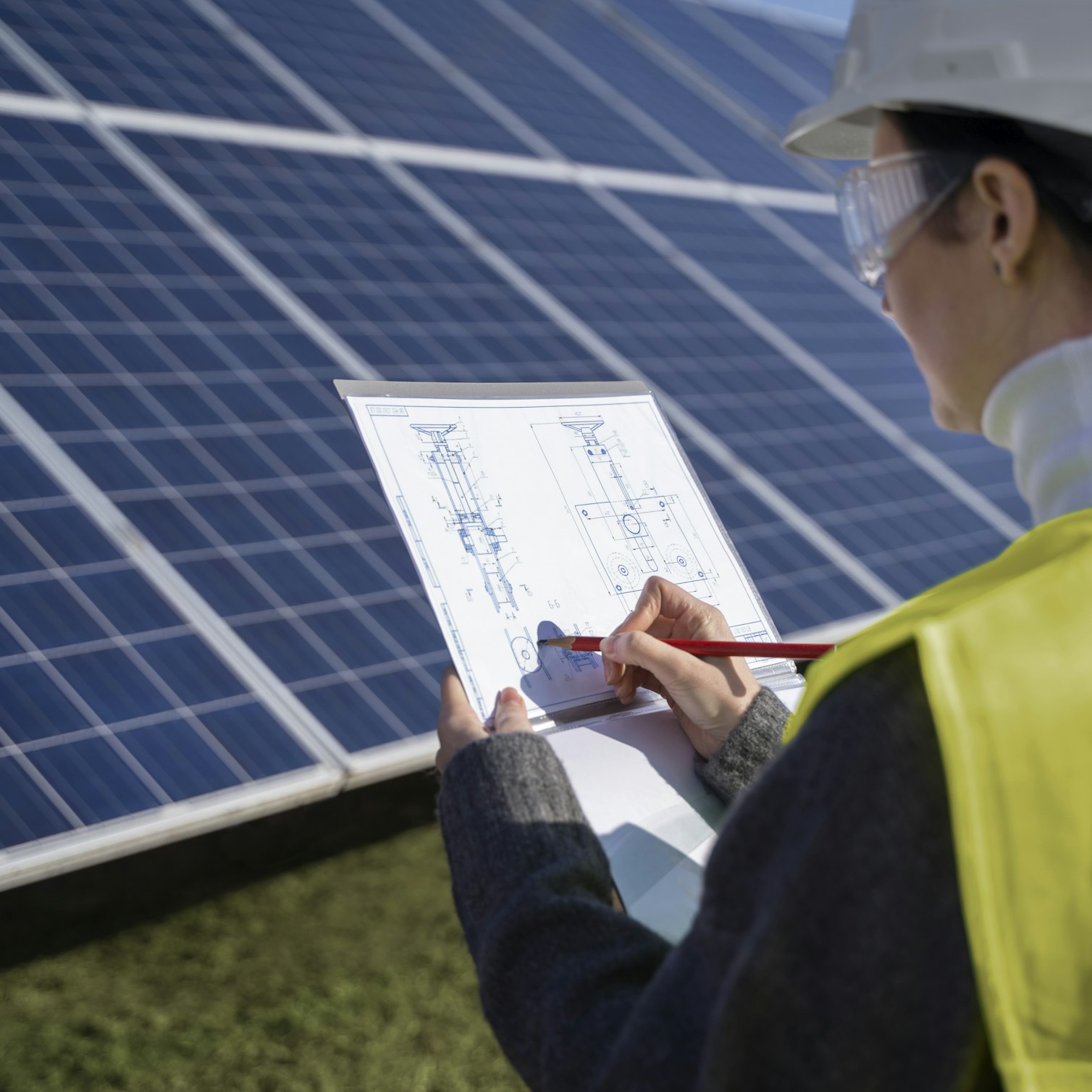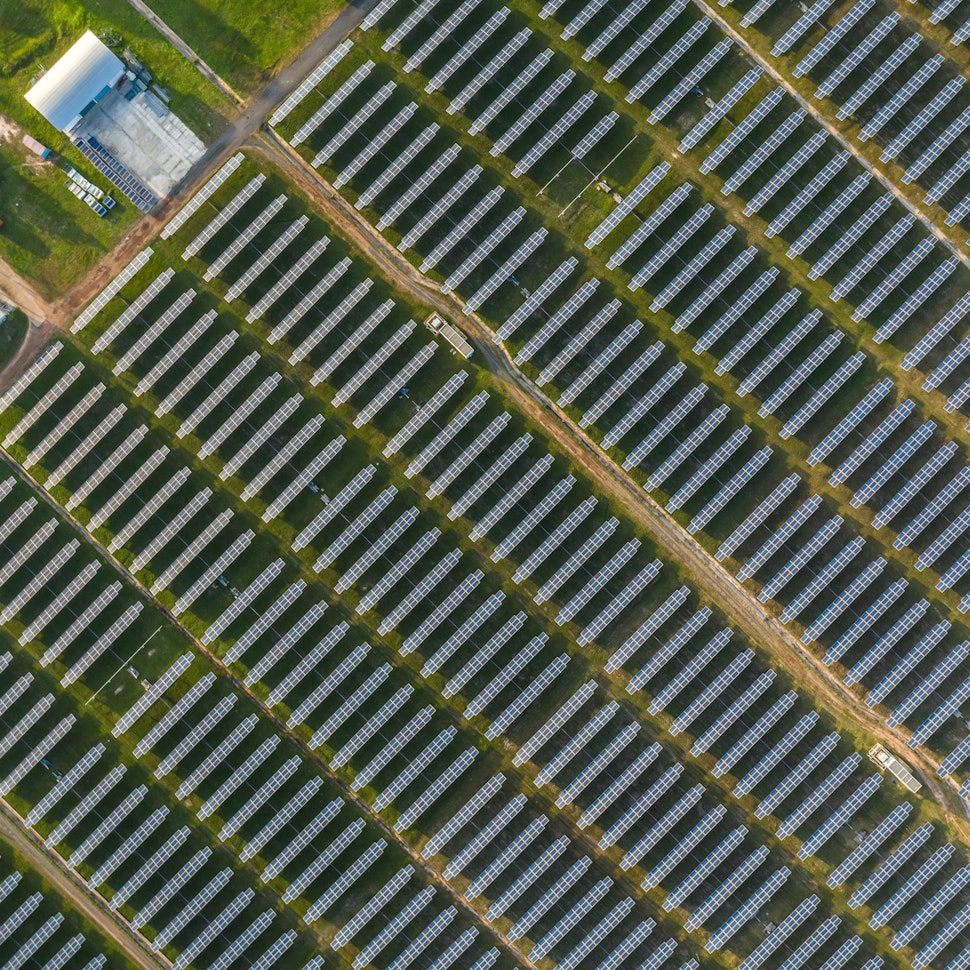- Solar energy blog
- How will the Solar Taskforce help the UK achieve its solar ambitions?
How will the Solar Taskforce help the UK achieve its solar ambitions?
Learn all about the UK Solar Taskforce and how it is poised to tackle the challenges and streamline the country’s solar PV.

Content
As the climate crisis deepens globally, the UK recognizes the pivotal role of solar photovoltaics in fortifying energy resilience. Increasing affordability and meeting ambitious decarbonization goals across the British economy becomes imperative with the urgent call for climate reform.
The UK government recently assembled the new UK Solar Taskforce, comprising influential leaders from the public sector, private industry, and institutional finance to accelerate the expansion.
In this blog, we’ll look at the Solar Taskforce, its aims, and who is involved. Read on to find out more.

What is the Solar Taskforce?
In short, the Solar Taskforce is an initiative that brings together leaders from “government, industry, regulatory, and other relevant organizations.” This coordinating body aims to install a sweeping set of policy and regulatory actions. These mandates include:
technology innovations
grid infrastructure upgrades
business model enhancements
investment vehicles necessary to realize the UK’s ambitious national solar vision
The project involves solar deployments rising fivefold from approximately 14 GW today to 70 GW of installed photovoltaic capacity across rooftops, ground mounts, and grid-scale facilities nationwide by 2035.
Achieving the lower-end projection of solar PV in the UK would still position the nation as one of the highest growing in the renewable energy market for a developed economy. However, capturing the full economic, environmental, and grid-balancing solar advantages requires pushing toward the upper bound of GW capacity. The Taskforce aims to enable policies to unlock private capital flows into the industry measured in the hundreds of billions of pounds.
For context, the UK’s total installed solar capacity sits around 15 GW as of May 2023, counting over a million discrete PV systems across homes, commercial sites, and solar parks. Hitting the GW target would likely require the British solar industry to average deployment additions of four to five GW worth of new generation capacity, arriving annually online over the next decade.
The Solar Taskforce holds executive leadership and industry expertise to map a comprehensive solar scaling plan. This ambition requires regulatory optimization to reach Britain’s solar potential.

Purpose of the Solar Taskforce
Until its targeted wrap-up in February 2024, the expert Solar Taskforce will drive forward multiple critical workstreams across the public and private sectors. The Taskforce has outlined three primary objectives to anchor its near-term work.
1) Strategic roadmap
Members will focus on developing an industry-backed national roadmap defining the precise solar PV deployment trajectory to reach the GW goals of cumulative installed capacity by the end of 2035.
The group will leverage its expertise and political capital to gain formal endorsement of the plan, along with garnering cross-partisan support. An authoritative whole-of-government blueprint provides vital visibility for policy consistency and investment certainty through multiple UK general election cycles. This continuity enables synchronizing ambitious solar capacity builds with grid upgrades and scaling domestic solar workforces across the value chain.
2) Unlocking deployment
This issue is a critical priority for the Solar Taskforce as the UK is seeing some of the longest interconnection dates in Europe, with some projects having to wait up to 15 years to be granted a secure connection for their solar project.
The Taskforce will streamline solar project development by identifying impactful policy and regulatory interventions that accelerate distributed and utility-scale build-outs nationwide. This plan includes:
assessing opportunities to reform permitting
environmental reviews
grid interconnections
building codes
planning policies
transparency measures
public guidance consolidation
The group will structure smart incentives and development programs to drive down costs through innovation across the technology supply chain. The new system will pilot emerging solar technologies to boost technical learning.
It will also offer incentives for global manufacturers to build British supply chains and create green jobs. Standardized contracts and financing will attract institutional investors and corporations to cheaper solar power.
3) Securing investment
Financial innovation must accompany any successful rapid transition plan. With installed solar regularly requiring capital outlays measured in the billions, further scale and efficiency can only come from engaging institutional investors and global capital markets. These institutions represent access to trillions in assets eager for reliable yields like those contracted solar projects can provide.
The UK already boasts enviable expertise across investment banking, fund management, and the City’s capital marketplace ecosystem. So, the nation has a strategic advantage in leveraging sophisticated investors and financial engineering to unlock unprecedented flows into domestic solar with de-risked and structured projects.
Replicating the success of special purpose vehicles for offshore wind or electric vehicle fleets could provide necessary shorthand due diligence for investors otherwise unfamiliar with the sector’s dynamics.

The Solar Taskforce solar coalition
The unparalleled coalition of elite solar stakeholders already secured as participants makes the UK Solar Taskforce uniquely capable of delivering on these pivotal objectives. Membership provides coverage across many sectors, including:
technology and project development
equipment manufacturing
policy and regulations
systems operation
electricity markets
financing channels
Executives come from government agencies, grid operators, developers, manufacturers, and experts. This task force anchors sustainable, resilient power over the next decade and promises an expansion of UK solar in the short and long term.
Curated public and private expertise will target regulatory and grid fixes to produce more low-cost solar electricity nationwide. Simultaneously, creating emission-free terawatt-hours to create sustainable prosperity for decades.
The Solar Taskforce team comprises:
Rt Hon. Graham Stuart MP, Minister of State for Energy Security and Net Zero
Chris Hewett, CEO of Solar Energy UK
Sarah Redwood, Department for Energy Security and Net Zero, Renewable Electricity
Gemma Grimes, Solar Energy UK
Ben Fawcett, Head of Solar, EDF Renewables
Alex DeSouza, General Counsel EMEA and Head of Transactions, Lightsource bp
Liz MacFarlane, Director, Segen
Mark Wakeford, Chair, EVO Energy
Adam Howard, Director, UK Infrastructure Bank
Ross Grier, Managing Director, Next Energy Capital
Ian Rippin, CEO, Microgeneration Certification Scheme
Lawrence Slade, CEO, Energy Networks Association
The UK Solar Taskforce aims to propel the nation to the forefront of the global energy transition by taking decisive action informed by Britain’s most influential solar voices. The UK may cement its leadership in the green revolution by generating 70 GW of domestically-produced, ultra-low-cost, renewable electricity from the sun. All while fueling economic growth, high-quality jobs, and climate resilience for communities nationwide.
The Solar Taskforce represents perhaps Britain’s most concerted effort yet to finally unlock the full potential for photovoltaics to transform the structure of its electricity system to combat climate change.
To learn more about solar energy transitions, download RatedPower’s ebook about how we can improve grid saturation in the clean energy transition.
Latest stories
Related posts
Market analysis
Power where it’s needed: Solving LatAm’s grid instability with distributed solar and storage
Find out how a bottom-up approach is solving LatAm’s grid instability, with community-led solar and storage projects giving people control over their energy.
Updated 29 DEC, 25

Technology and engineering
Outsmarting congestion: How efficient solar design helps navigate Nordic grid limits
Learn how Nordic operators and solar developers are adjusting to tighter grid conditions and how policy and design decisions are keeping projects on track.
Updated 16 DEC, 25

Market analysis
Powering through the peak: Why solar + storage is gaining momentum in MENAT
Discover how MENAT is building a functioning solar economy and why rising peak demand during extreme heat is squeezing its energy architecture.
Updated 11 DEC, 25


- RatedPower
- Solar energy blog
- How will the Solar Taskforce help the UK achieve its solar ambitions?
 Watch a demo
Watch a demo Ask our AI Product Expert
Ask our AI Product Expert
